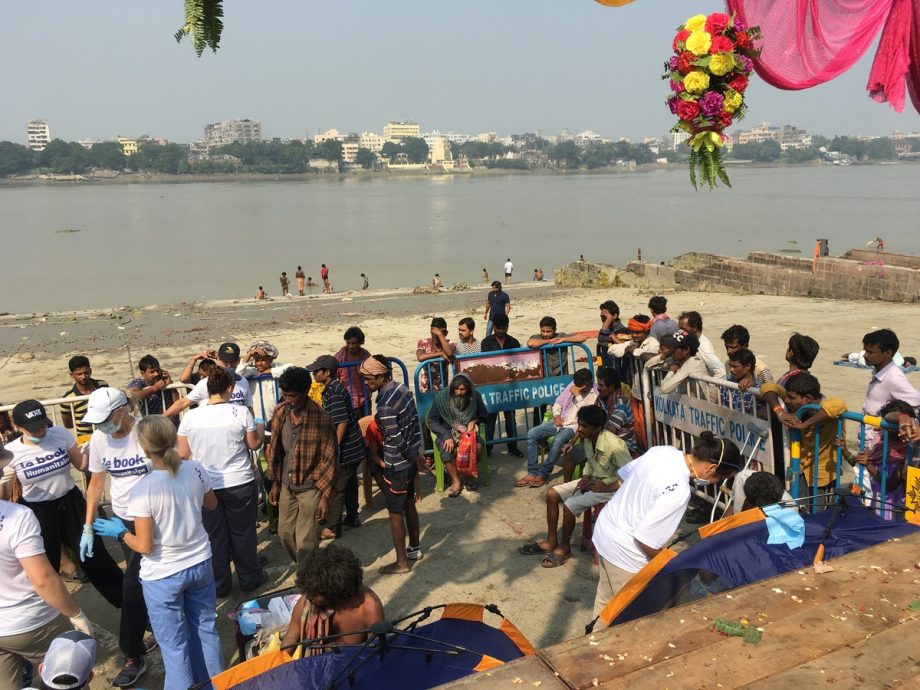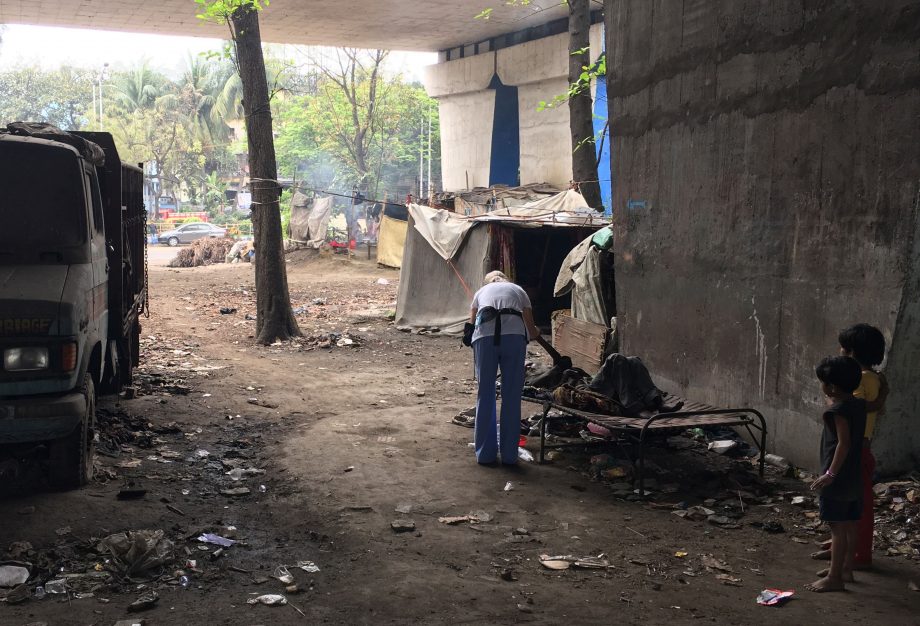Xenophobic Moods in the Wake of a Pandemic
Impressions from India
This note is born out of our exchange with my supervisor, professor William S. Sax, about our recent escapes from different parts of India, in the outbreak of the COVID-19 pandemic. Keeping in mind the Modi’s government’s abrupt manner of action, I decided to make my way back when things started to build up, and reached Germany with only minor obstacles. This was not the case of professor Sax, who shared with me the story of his last-minute escape. Especially disturbing was his account of how many locals suddenly turned hostile towards Westerners – on various occasions the locals treated them as undesirable alien bodies, vectors of the mysterious deadly virus.
As for me, I only witnessed the beginning of this change in mood. It glimmered for the first time, while I was working in Kolkata at Nimtala Ghat near the Howrah Bridge with a group of Quebecois humanitarian volunteers. The group walled off a square space on the riverbank with metal fences on wheels, marked ‘kolkata traffic police’, usually stacked in the corner of the paved riverside square. While cleaning up the space for their makeshift clinic, the humanitarians pushed aside a group of local street dwellers smoking cannabis on the riverbank, some dressed as wandering tantric renouncers, in black robes and with rosaries of skull-shaped beads (probably, they are attracted by the area’s cremation grounds). The men did not resist and even helped carry away one of their companions, in no condition to move.

The makeshift street clinic at Nimtala Ghat attracts dozens of idle spectators. Copyright: CC Egor Novikov 2020
Inside the fenced space, the humanitarians installed a few small tents and were treating the local slum and street dwellers suffering from infected injuries and other conditions. As always happens in Kolkata, a crowd of spectators immediately surrounded the place of intervention. The volunteers were wearing masks and gloves. At one point, I had a mask on, too, as I was helping to check a homeless patient who was violently coughing. A local street man from the group of the cannabis smokers stopped in front of me among the spectators, as I was talking to one of our local assistants over the fence. The man said something to me in Bengali bitterly and a bit hysterically, as if challenging me. I could not get much of what he was saying. Our local assistants recruited from the street people stood next to him. They did not appear offended, but felt obliged to prevent a conflict and made the man leave after an abrupt exchange. When I asked one of them what the man was saying, he replied with an apologetic but amused smile: “he say YOU virus! We NOT virus!”
At that moment, I saw the event as a part of the specific situation of the humanitarian invasion, always complicated by the enormous misbalances of symbolic power and non-reciprocal gift giving. Now, I also see it in the light of the consequent rise of xenophobic sentiments, taking very explicit and ugly forms in the following days. Having departed quite early, I mostly learned about these developments from the humanitarians I left behind in Kolkata. One example is the female Argentinian volunteer C., who worked in Kolkata for a few months. After the virus news spread on media, people on the street would shout at her ‘Corona!’, once someone threw a handful of puffed rice at her. Some people on the street demanded that she wears a mask, but when she would put one on, passersby shunned her even more than before. On various occasions, other humanitarians were prevented by the locals from entering public buses and shops. I am following a few friends locked up in their hostels in Kolkata at this moment and they are in an uneasy situation, but luckily supported by local friends and personnel.

Although humanitarian work always provokes ethical and political tensions, before the pandemic the ‘humanitarians’ in Kolkata were mostly well accepted, seen as benevolent and powerful aliens. Copyright: CC Egor Novikov 2020
Although definitely disturbing, to me this shift in mood was not unexpected. Firstly, of course, the rise of xenophobia in the face of a pandemic is a rather universal pattern, that we can witness in Europe as well. We are already forgetting how the people with South-Asian features were mistreated in the West during the Chinese phase of the epidemic, so that a group of the members of the South Asian department of my university even called for a meeting to counter the rise of the xenophobic tendencies. Nevertheless, the quasi-universal pattern of identifying and expelling the ‘dangerous stranger’ from within the community in dangerous times can take different cultural shapes. There is a popular heterostereotype of Indian people sharing a racialized mentality. Talking about ‘race’ is not very precise in this case, because the epistemic mechanism behind the Indian ‘racism’ only partially borrows from the modern (pseudo-)scientific discourse lying at the core of the western concept of ‘race’. The Indian version of racism is rooted in regionalism, entangled with caste relations and local histories of migration and conquest. Nevertheless, at the level of social phenomena, the bind of apparent genetic features and social role assigned to their bearer works similarly in these different cultural contexts. As we usually knew it until now, in northern India the discrimination based on physical features targeted mostly the darker skinned people, while the fair-skinned Westerners occupied the safe side of it.
Among other things, the current pandemic is a great social laboratory, where countless experiments, unimaginable just a few months ago, are under way. They provide unique data for various branches of knowledge, from politics to environmental studies. The above mentioned rupture of the habitual social fabric is no exception – it reveals parts of the collective consciousness, concealed under the routine practices of life in more ‘regular’ times. It reveals the underside of the positive discrimination the Westerners typically experience in India: the discrimination, very well known to the frequent white visitors of the country, which makes one feel flattered and morally compromised at the same time, when dressed in the attributes of the colonizers and treated accordingly. The underside of this privilege is resentment, which in ‘peaceful’ times only surfaces occasionally, when the global (post)colonial privilege of mobility gives way to the privilege of locality.
Why do these tendencies surface today? The imagery of the invisible deadly virus, multiplied through the media, provokes existential fear of the uncontrollable, leading to the desire to secure and clarify one’s immediate surroundings. Scapegoating and expulsion of ‘strangers’ are common impulsive responses to this demand, and not only in India. For example, enmity towards people arriving from Moscow is rising in regions of Russia. The governor of one of such regions addressed the tensions on his Instagram page: ‘the readiness to kill [the people coming from Moscow] and burn them at the stake is not something we should be proud of’[i]. The stereotypical resentment of the provincial citizens towards Muscovites finds a fertile ground in the angst of the pandemic.
The news reports and private stories of xenophobic reaction on the pandemic, coming from across communities and regions, reveal the old tensions between the local and the global, hitherto contained by stable flows of power, the networks of exchange and dependency. On the surface, this reaction consists of at least three recurring components, entangled in different proportions: the released resentment of various genealogies, impulsive attempts to control the immediate surroundings through scapegoating, and the rational perception of traveling individuals as vectors, transferring the virus across the natural and legal borders. In the globalized world before the outbreak of the pandemic, mobility had been not only an attribute of the privileged but also a source of symbolic power. In the time of emergency, locality casts away the servant’s dress, and the symbolic hierarchy of globalization turns upside down: belonging becomes the token of authenticity, granting the right to exist, while mobility becomes the ‘black spot’ of the Stranger.
Submitted on 3. April 2020/ Revised on 22. April 2020
Egor Novikov is a doctoral candidate at HCTS of Heidelberg University, with degrees in philosophy and anthropology. His main current research field is the city of Kolkata, where he studies ethical and emotional tensions of international humanitarian work.
[i] https://www.instagram.com/tv/B-i6qyNpL4-/?utm_source=ig_web_copy_link. Last access: 22/4/2020































